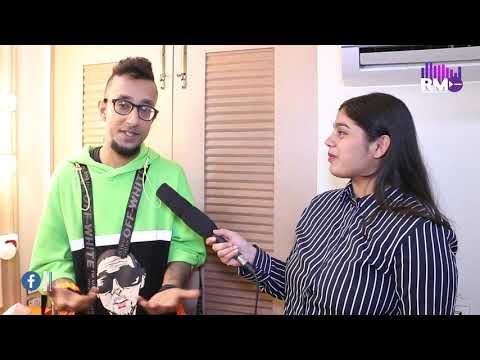Neelesh Misra takes Big FM's 'Yaadon ka Idiot Box' to next level

MUMBAI: Proving that non-music content can also survive on radio and has a long road ahead in the medium, Neelesh Misra revived the art of storytelling on radio through his show ‘Yaadon ka Idiot Box’. As the show is currently in its second edition, the lyricist has big plans to take the show to the next level.
Apart from being aired on Big FM networks every Monday-Friday from 9-11pm, the stories narrated on the show will now be compiled into series of CDs and books in English and Hindi. The first series will comprise of stories from season one into two volumes by Harper Collins.
Misra says, “The idea is to write literature which can be read as books and seen as serious short stories instead of just on radio. The quality of stories have to remain good so I have to remain excited enough as a storyteller as it is very creatively challenging to explore newer themes.”
The stories will also be available on mobile phones where the listener can dial a number and hear the story. “The content will be owned by Big FM but the platform will be announced at a later date. This is the future of storytelling where people anywhere in India can dial a number and hear a story,” he claims.
Trying to increase its listenership in the second season, the show has taken the digital route through sites like facebook and Youtube. After being aired on the show, the stories are also uploaded on its facebook page and as audio format on its Youtube channel which has been garnering record numbers.
“The average listenership on the show as per the station numbers is about 35million everyday in 35 cities. The stories that we uploaded on facebook got 5.5mn page view last year in the first three months. This year the numbers are bigger as we are averaging at about 4mn page views per month garnered from around the world. So in the first two months we have got around eight million page views,” he reveals.
Though the first season of the show was a one hour slot with five hour repeat on Sundays, it is now a two hour slot with the same repeat schedules. While the first hour of the show features stories, the other two segments comprise of listener interaction with call-ins and reading out their facebook messages which span across the globe.
The show aims to revive the dying art of storytelling in the country through a powerful medium as radio. He states, “Radio is a very fickle medium so listener engagement is the key. Our listeners are emotionally evolved people unlike the regular audience.”
Keeping that factor in mind, the network recently changed its timings for the show in the states of Gujarat, Rajasthan and Madhya Pradesh as these regions do not listen to radio in the night and have separate primetime bands. The channel is also in talks to adapt the stories into regional languages like Kannada, Tamil for its non-Hindi speaking markets. The show has already garnered widespread popularity in cities like Kota Indore, Delhi, Mumbai and Srinagar amongst others.
Aiming to give listeners an interrupted experience during the show, the channel has kept the particular segment as an ad-free hour defying several myths of the medium and creating a new genre in itself. The playlist has also been moulded keeping in mind the mood of the stories.
The first season of the show featured stories written by Misra alone but a team of young writers have been chosen to write the stories for this edition. Chosen on the basis of their blogs and tweets, the team of 12-13 writers is called ‘Monday Mandli’ and is based out of Mumbai and Delhi.
Considering the core target group of the show is aimed at listeners aged between 13-24, maintaining the purity of the language is a cause of concern. But Misra believes that compromising on the language factor is unacceptable as the young Indian audience has a split personality. While they enjoy tracks like ‘Munni’ and ‘Shiela’, they also listen to emotionally intense stories of the show and provide feedback.
“I try very hard to maintain the purity of language but very often if I use a very difficult word I actually translate it into English. I will not compromise on language and start talking in Hinglish but I will explain it to you. But none of the listeners have ever complained about the fact. I think they enjoy it as most of the content you hear on radio and television tries to dumb itself down. A ‘Yaad Sheher’ story will not dumb itself down as I treat my listeners very seriously and with a lot of respect,” he affirms.
Some of the best loved stories of the show include ‘Che Phere’, ‘Almari’, ‘Nani ki Car’ and ‘Dhoop ka Kona’ amongst others. While the writers don’t make a conscious effort to force in a theme, there is a realization that the stories have a moral compass and an opinion where the themes creep in. Some of the stories have revolved around domestic violence, respect for women, HIV, colour discrimination and more.
The show initially had to face a lot of questions and break the myths where everyone believed that people only listen to radio for music and people would not listen to stories on a primetime slot. Mishra agrees, “Radio is a fickle medium. These are all the myths the show broke. The kind of feedback we got was awesome last year. There was an entire hostel in Kota that changed its dinner time for the show.”
While majority of the content played by most radio stations include bollywood music content, there is also a space for non-music content which is yet to be recognised by some. Supporting this statement the host says, “I would love it if someday some radio stations only played stories or plays because there is a big market for them. It’s been a great fault by content creators that we have misread our audiences at various levels. The space and the need for innovative content were never as acute as now because there is a bollywoodisation of everything. Radio cannot survive on bollywood alone.”














